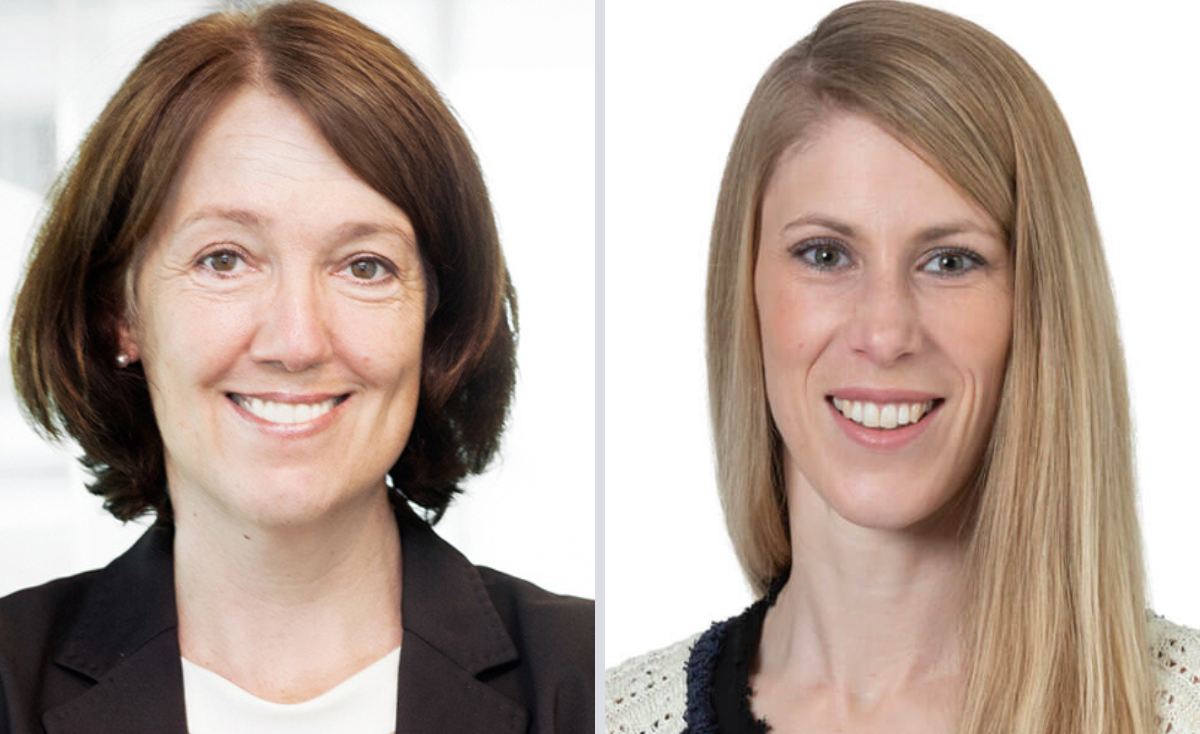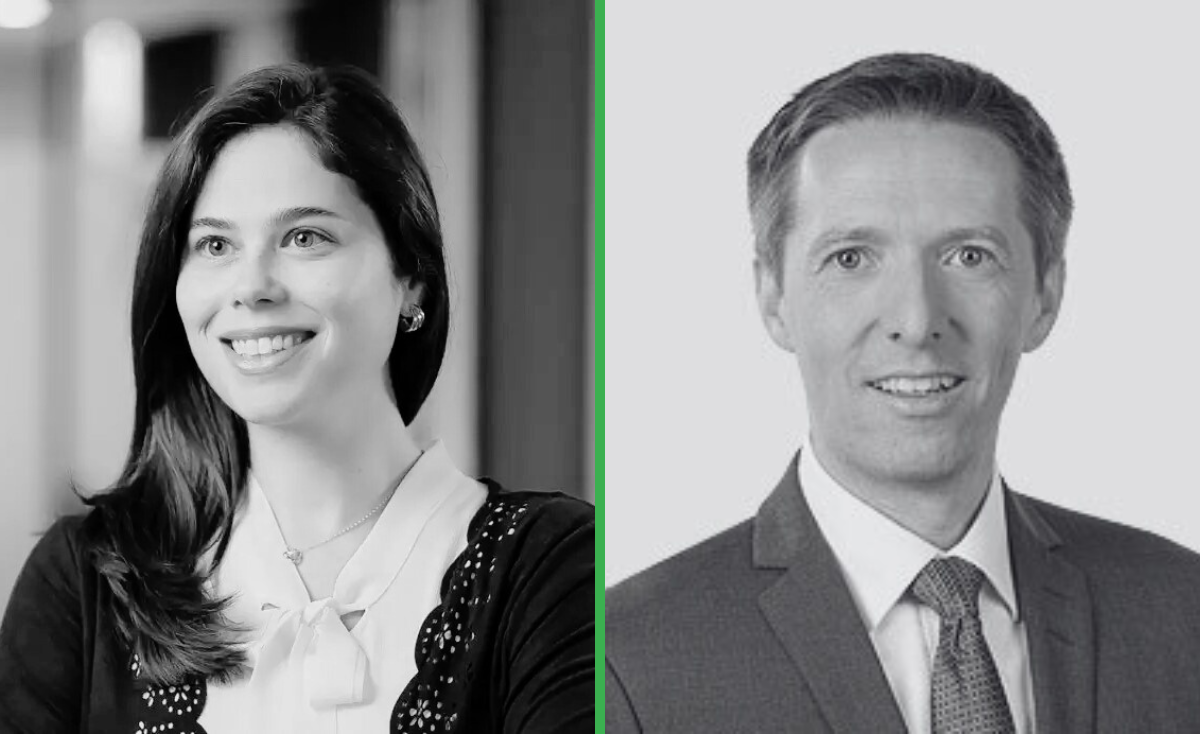How can fund operators help clients integrate ESG strategies?
Claudia Röring, Sustainable Investing Coordinator, Quoniam, and Miriam Benarey, Associate Director, Sustainability and Stewardship, Impax Asset Management, discuss what customisation can mean for helping clients better integrate ESG.
Fund Operator Editor POSTED ON 7/10/2024 8:00:00 AM
 Röring (L) and Benarey.
Röring (L) and Benarey.
The thorny issue of how client prospects should and can integrate ESG and sustainable strategies into their operations, and how this has impacted the mid-long-term strategy and data, requires a lot of thought and patience.
So said Claudia Röring, Sustainable Investing Coordinator at Quoniam, and Miriam Benarey, Associate Director, Sustainability and Stewardship at Impax Asset Management, at a recent roundtable.
Earlier this year, Clear Path Analysis held a roundtable in Frankfurt in conjunction with Clarity AI and 16 investment groups – including Aviva Investors, Aegon Asset Management, Columbia Threadneedle, and Union Investments – to understand the major themes impacting ESG investment, operations, and reporting. The discussion is now compiled in a new report called, “Effective ESG And Sustainability Investment Policies”.
The panellists shared the current difficulties they are facing, the key challenges of the future, and how they are overcoming barriers to sustainable investing, which included ideas around tackling the challenges of advising client prospects on their ESG needs – how to the integrate it into their day-to-day operations without overwhelming them, do they need to customise for every client or is there a standard way it could work? And how do they advise on compliance?
"Dealing with ESG-related client requests is often rather complex, and that’s what we do most of the time,” said Röring. “We only do institutional business, so we’re less confronted with some of the topics mentioned here.”
Röring said that customisation is what her company does because most of the money they manage is in mandates. “We talk to clients about their specific approaches because they don’t buy anything off the shelf, and they have individual guidelines and investment approaches,” she continued. “We work with them to develop a solution in terms of financial metrics on the one hand and sustainable outcomes on the other."
She stated that as a quant it was important that the investment universe was not “overly constrained, as [it] reduces our ability to deliver alpha”.
“Limiting our universe means that we can’t make that many bets, which is a key part of the process,” she said. “So, showing the client what it means to reduce the investment universe with extensive exclusions with respect to the impact on the risk/return profile is part of the conversation, for example, what does it mean in terms of adding tracking error to the portfolio?”
She further explained, saying that as her company does liquid assets, equities, and bonds, these were important conversations that involved needing to come up with a clear understanding of what the investment target is and what they could deliver it given specific ESG criteria.
“We have done some customisation over the last two years. For instance, we have created an investment signal using forward-looking climate measures, where we have taken various data points on climate targets and blended them into our alpha signal,” Röring said.
“We’ve also worked on a strategy where we’ve incorporated a range of externalities and their financial impact on expected return; and more recently, we’ve set up a number of accounts where we’ve implemented client-specific decarbonisation trajectories in the portfolio – one of them is an emerging market strategy, where it’s difficult to obtain the data,” she said.
She also reiterated that these factors were key but needed transparency and built into the process. “We need to be able to provide a range of metrics that the clients can choose from. That’s important as most clients want to manage their overall assets according to one metric and don’t want every asset manager to do something different."
"So being in a position where we have a large data warehouse, where we rely on several vendors and also on data that we create ourselves, has become very helpful in helping clients with these kinds of requests."
Nature, social, climate
The panellists built on the theme of customisation, reminding stakeholders that one part of ESG was not equal to another.
Miriam Benarey, Associate Director of Sustainability and Stewardship at Impax Asset Management, said that in the environmental space – for example, around climate - there was more consensus around what the leading indicators were. However, she said that “nature is a different topic”, adding that around the ‘Social’ aspect of ESG, the circumstances were completely different once again.
The need for investment teams to take the time to understand the ‘S’ in ESG as a separate and complex issue has long been lauded by certain facets of the investment industry.
“We’ve launched a proprietary social taxonomy and an investment strategy focused on social leaders,” she said. “There are three types of data that we need where disclosure is still patchy sometimes and one of these is careful revenue breakdown analysis to what these businesses do and how that fits our taxonomy. Revenue breakdowns don’t come as you may need them and that is one thing that we do in-house, and where the reality doesn’t match our needs."
She added that this component also had a corporate culture factor analysis that is needed. “Corporate culture indicators, whether it’s diversity management, employee turnover, workplace equity, inclusive business practices, etc., factor into that,” she said. “Again, in those social factors, there’s less good disclosure than when it comes to climate or other environmental metrics.”
The third one is positive impact measurement, she said, and this was something that Impax had done for many years. “When we look at capturing positive social outcomes that is difficult and something that we actively work with companies on in developing their disclosure and trying to look at these, and shed light on these harder to quantify areas where there is a lack over disclosures,” said Benarey, “be it health innovation such as the patient’s treatment [or something else] that’s the impact that we would love or access to.”
You can read more of Röring and Benarey’s thoughts and the report in full, by clicking here.
Please Sign In or Register to leave a Comment.
SUBSCRIBE
Get the recent popular stories straight into your inbox




